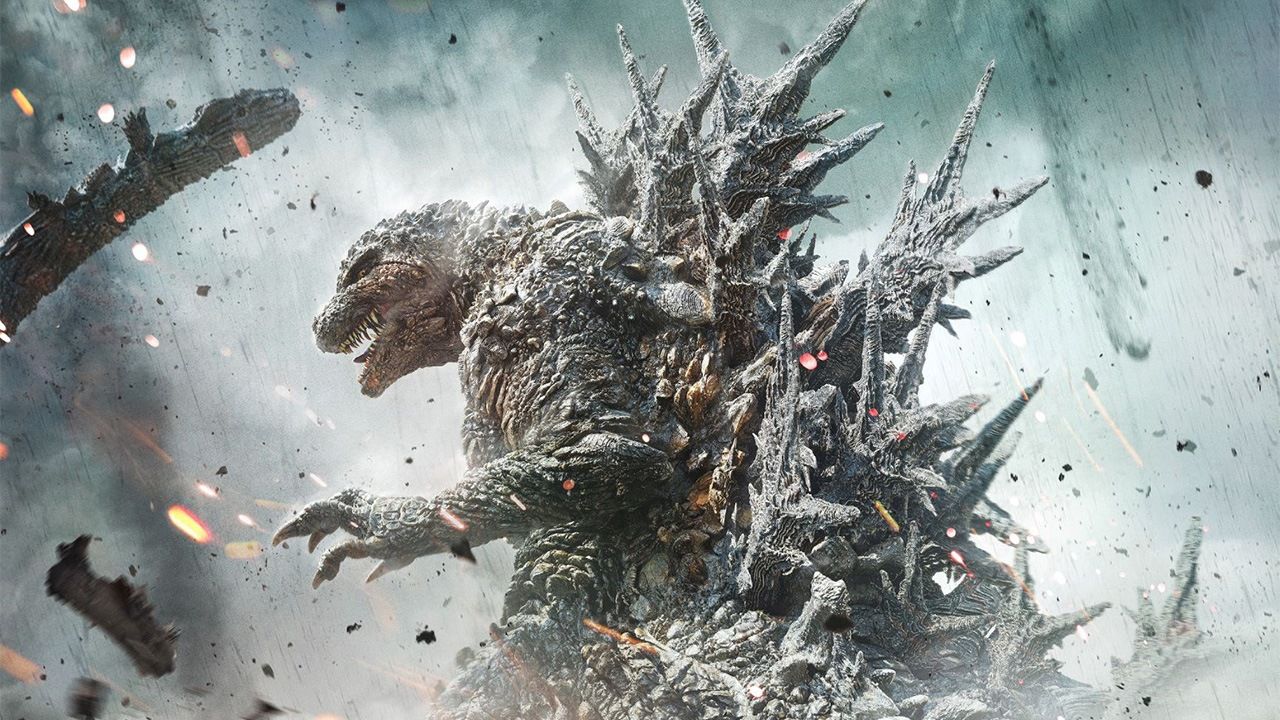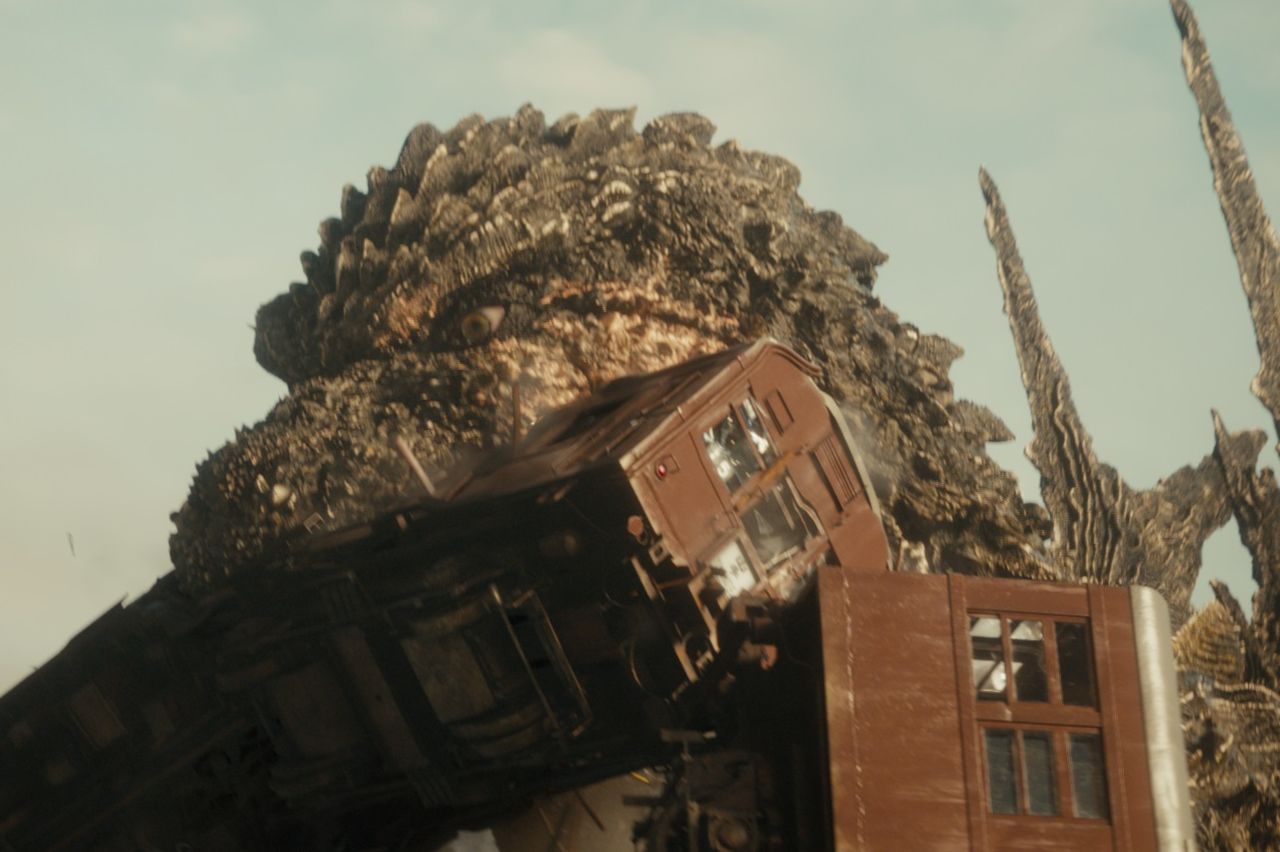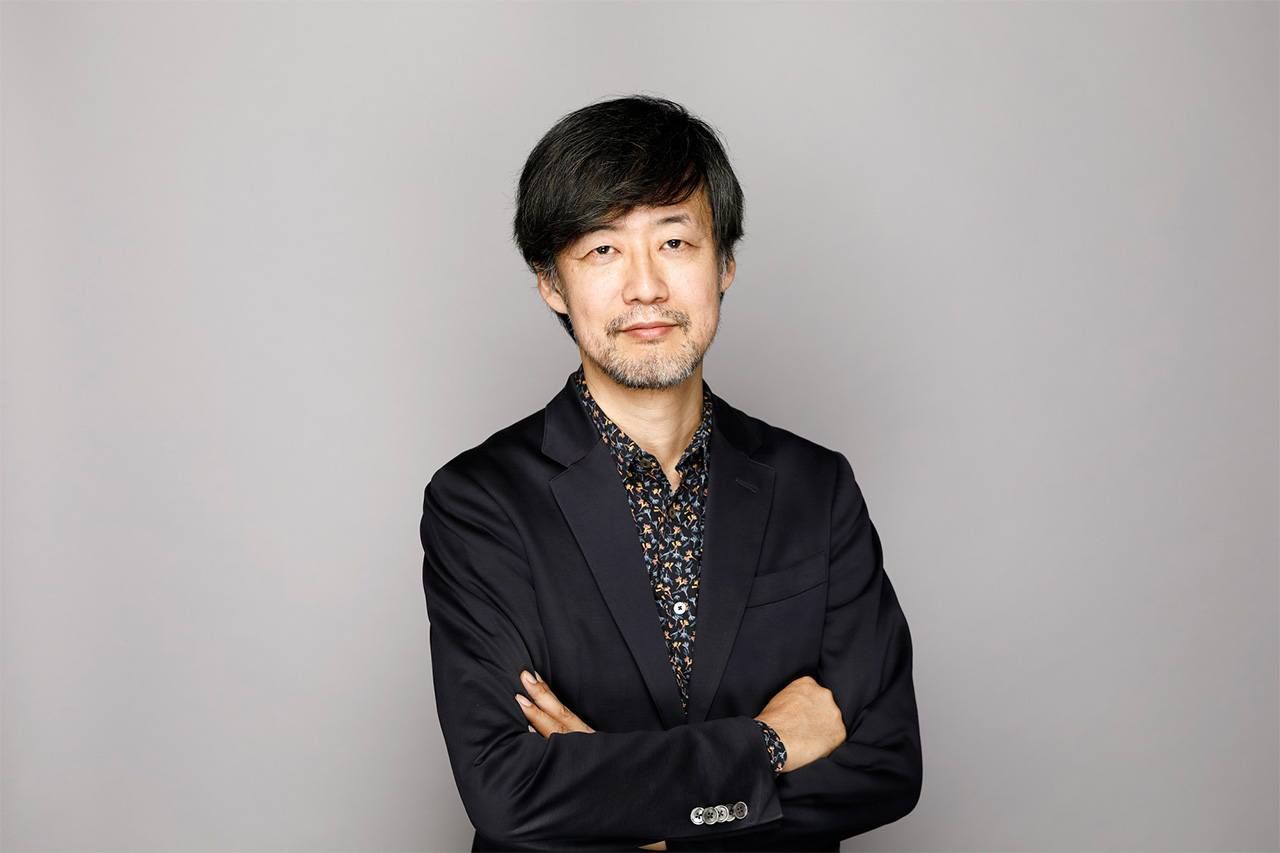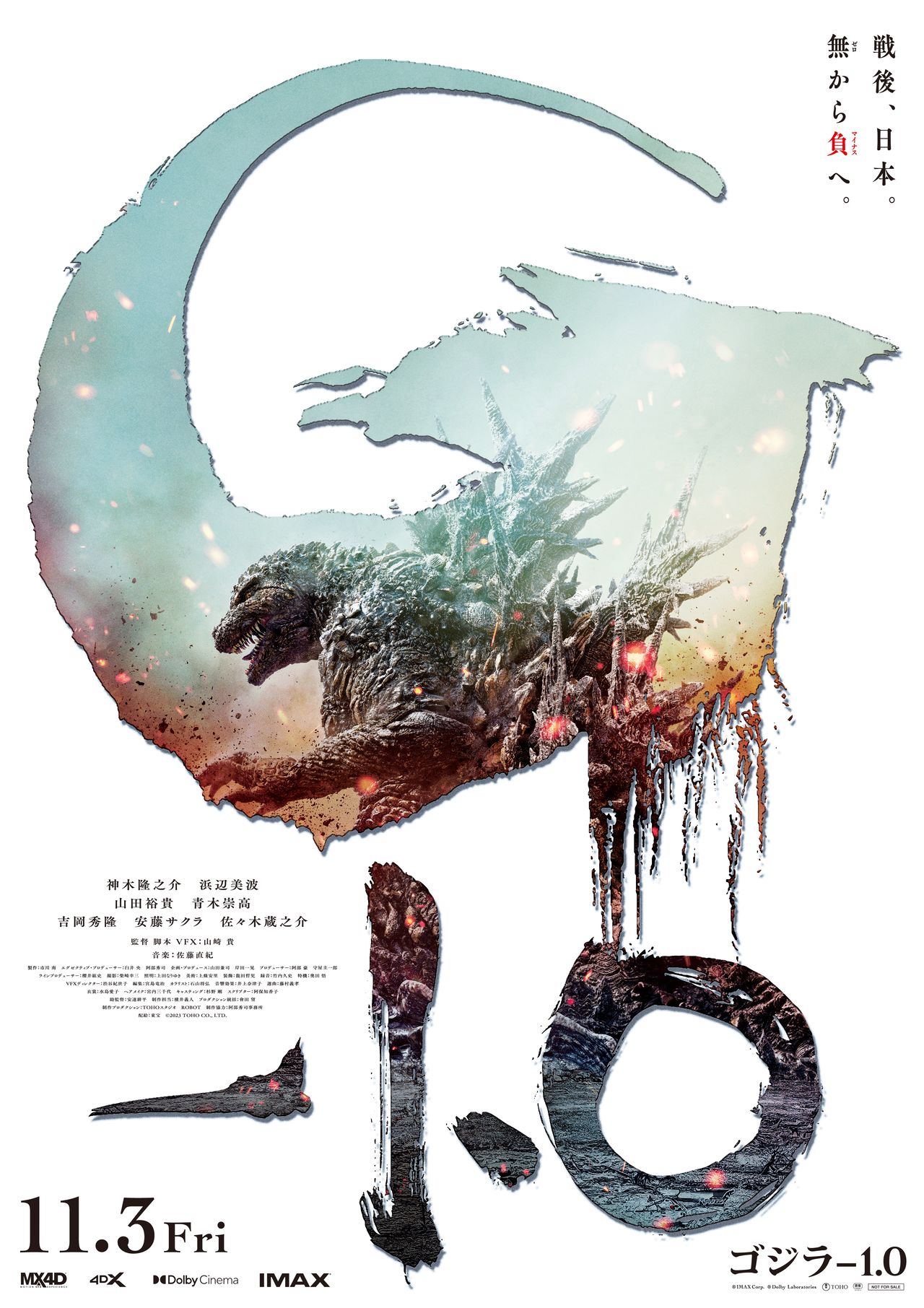
Rewriting the King of Monsters’ History in “Godzilla Minus One”
Cinema- English
- 日本語
- 简体字
- 繁體字
- Français
- Español
- العربية
- Русский
From Resurgence to Minus One
Yamazaki Takashi, who directed, wrote, and handled special effects for Godzilla Minus One, had this to say about Shin Godzilla in a recent talk with the film’s lead director Anno Hideaki: “Shin Godzilla was amazing. When Tōhō asked me if I would do the next Godzilla movie, I could only think, “I have to follow Shin?!”
The celebrated first Godzilla movie, released in November 1954, came only nine years after the end of World War II. It was a time when memories of the damage were still fresh, and that film was the first to depict the horrors of war and the atomic bombing in a kaijū film.
Shin Godzilla was a re-imagining of that movie based on what would happen if the beast appeared today. It, too, came only five years after the Great East Japan Earthquake and the Fukushima Daiichi Nuclear Power Station accident, and again used Godzilla as a metaphor for disaster and the power of the atom. It expressed the original film’s structure and spiritual core in a fresh, modern way, and also threw in some tricks that took audiences by surprise.
Yamazaki goes on: “Shin Godzilla left only scorched earth behind. No one would try to follow that up; you’d have to be a fool to even consider it!” And so, he chose to eschew modern Japan and set his story right after World War II. This is the first film in the franchise to use a setting before the original. The film starts in 1945, near the close of the war, on the fictional but familiar setting of Ōdo Island.
Kamikaze pilot Shikishima Kōichi—played by Kamiki Ryūnosuke—is forced to delay his attack due to engine trouble and returns to the airfield at Ōdo. That evening, though, a beast of local legend—Godzilla, of course—makes land and annihilates the Naval Air Corps stationed there. The only survivors are Shikishima and aircraft mechanic Tachibana Sōsaku (Aoki Munetaka).
After the war, Shikishima returns to Tokyo and begins living with Ōishi Noriko, played by Hamabe Minami, and a young orphan she has taken in. One day, Shikishima, working on a minesweeper ship, and his shipmates are sent on a mission to stop a large underwater creature approaching Japan. The creature is Godzilla, the cause of Shikishima’s deep trauma. He is determined to prevent a repeat of the disaster that befell Ōdo Island, but once more he is witness to tragedy.

This latest incarnation of Godzilla is truly terrifying. (© 2023 Toho Co., Ltd.)
Postwar Japan and Godzilla
With each new movie that comes along, filmmakers struggle with how to depict the main role in the series, that of the monster. In Shin Godzilla, Anno Hideaki presented a beast unlike any seen before, and Yamazaki has followed suit with a new Godzilla. Yamazaki has dealt with the king of monsters before, bringing it to the screen in 2007’s Always Sanchōme no yūhi (Always Sunset on Third Street) as 3D computer graphics, and also helping out on Godzilla: The Ride for the Seibuen amusement park. This time, it feels like he has perfected his approach.
One thing is clear. Unlike Shin Godzilla, this work is not attempting to modernize or remake the original Godzilla film. Although the film does pay distinct homage to the original, like how Godzilla makes his first appearance at Ōdo Island, the overall direction of the work is a complete reversal. You could almost say that the story’s theme and premise are antithetical to the original.
Even so, one element that this film inherits from the original is Godzilla as a manifestation of the terror of the atom. Godzilla’s origin stands against the backdrop of the atomic bombing of Hiroshima and Nagasaki, as well as the events surrounding the ship Daigo Fukuryū Maru being caught up in United States nuclear testing in March 1954. That is most clearly emphasized in the film’s staging of the beast’s atomic breath, particularly the scene showing the destruction of Ginza. It is a vision of urban destruction perhaps unequaled in the series’ history, as brilliant energy spreads down the beast’s back and raises a wind that sends people flying. A black rain, like that said to have fallen on Hiroshima and Nagasaki after the bombings, falls on the wasteland that was once Tokyo’s ritziest district. This vision of Ginza as a scene from hell is so finely wrought that it takes the breath away.
In retrospect, there is no filmmaker in Japan working today who is as focused on Japan during and after World War II as Yamazaki. In the Always series, he depicts Japan from the late 1950s into the 1960s. In the 2013 Eien no zero (The Eternal Zero), he tells the story of the Kamikaze squadrons, while the 2016 Kaizoku to yobareta otoko (Fueled: The Man They Called “Pirate”) is the tale of a man succeeding in Japan’s postwar oil industry and the 2019 Arukimedesu no taisen (The Great War of Archimedes) explores the building of the battleship Yamato. Even as he works in popular animated fare like Stand By Me Doraemon (2014), Kiseijū (Parasyte) (2015), Dragon Quest: Your Story (2019), and Lupin III: The First (2019), he still puts out a war-related film at the rapid pace of one every three or four years.
Knowing Yamazaki’s interest in postwar Japan becomes key to understanding this new Godzilla. The beast of Godzilla Minus One holds meaning beyond serving as a metaphor for war and the atomic bombs. Why does it attack Japan? What exactly is the monster? While multiple interpretations exist, the film directly address a particular hypothesis that fans and critics have bandied about for years. True Godzilla fans will likely be quick to recall 2001’s Godzilla, Mothra, and King Ghidorah: Giant Monsters All-Out Attack.
The central idea of this latest film, as in that one, is “an end to war.” Shikishima was a kamikaze pilot who did not fly his mission, and lives with deep guilt over being the sole survivor of his squad. When his anguish ties directly to the answer to why Godzilla is attacking Japan, it transforms the film from being a mere kaijū movie to another Yamazaki exploration of war, following on from Eien no zero.

Director, scriptwriter, and VFX head Yamazaki Takashi says, “I aimed for filmmaking like nothing in the Godzilla series to date.” (© 2023 Toho Co., Ltd)
A New Image of Godzilla
Yamazaki himself considers Godzilla Minus One to be the peak of his career and says, “I poured all of my knowledge and skills as a director into it.” As a leader in the field of special effects in Japanese cinema, someone who has continuously worked with World War II, and a creator who has also tried to bring new interpretations of the Godzilla character, this does seem to be a culmination of everything he has done before.
The presentation and visuals around this new Godzilla also display influence from the Hollywood movies Yamazaki has loved since his childhood, particularly those of Steven Spielberg. Godzilla’s destruction of Ōdo Island contains clear references to Jurassic Park (2013), the ocean pursuit scene recalls Jaws (1975), and the horror sweeping through a city facing an overwhelming threat is much like that of 2005’s War of the Worlds. There is also a nod to the 1977 Star Wars, another Yamazaki favorite, toward the end of the film.
The way Godzilla is depicted in 3D graphics is also different from the tokusatsu-influenced unnatural creepiness of the beast in Shin Godzilla. This new interpretation, which seems to be recalling Hollywood’s more animalistic Godzilla, presents a unique version that blends both Japanese and American influences. Its burning eyes as it glares at the humans scrambling at its feet carry a terrifying impression of malice.
This film brings something new both by using the latest techniques to create a new image of Godzilla and placing it in postwar Japan. The scene where it first takes the stage is impressive and thrilling enough to knock you out of your seat, while in the latter half, the characters finally rise to respond to the need to take down Godzilla. The latter is a blazing turn that recalls Shin Godzilla, which Yamazaki surely intended.
Not Without Issues
I do have to point out that there are some significant issues in this work as a film. Thematically, I can see why Yamazaki set this in the immediate postwar era as he did, but the script and direction—as opposed to the focus on visuals—do not effectively depict the social backdrop, values, and spirit of the times, and so fail to present the needed realistic grounding for the film. All of Yamazaki’s films set before, during, and after the war so far have been based on books and had other scriptwriters. This one is purely his own work, and as such I feel there was room for a stronger foundation.
The main character of Shikishima displayed compelling complexity, but the surrounding characters, including his love interest Ōishi Noriko, were shallower sketches. The film failed to properly convey their motivations or relationships. Compared to Shin Godzilla, which intentionally ignored deeper human drama, this work needed that human element but was simply unable to deliver it. That could explain that when the film shifts midway through from the human stories to the fight against Godzilla, it seems to come together much better.
Of course, this is a Godzilla movie. Everyone who has made one has struggled with the idea of how to make the parts of the film without Godzilla interesting, and in that sense, this truly is just carrying on the tradition of the series. Whatever else might be the case, a new Japanese Godzilla has stomped into the modern era with incredible power and terror, showing how the King of Monsters is fully capable of adapting to the times. I applaud the daring of this latest installment and look forward to seeing how the series develops from the thirty-first entry and beyond.
(Originally published in Japanese. All images © 2023 Toho Co., Ltd.)
